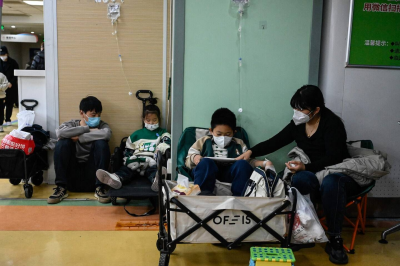The Washington Post-WHO asks China about clusters of respiratory disease among children
November 23, 2023 3 min 458 words
这则报道引发了对中国儿童呼吸道疾病激增的关切。世卫组织的正式请求显示了对疫情透明度的渴望,但也凸显了国际合作的必要性。中国卫生部门应当积极响应,提供详实的流行病学、临床和实验室数据,以更好地理解问题根源。报道中提到病例上升与解封政策有关,这引发了对政府防控策略的质疑。在这个关键时刻,透明沟通和及时行动至关重要,以遏制潜在风险。此外,媒体和国际社会应持续关注,并为中国提供支持。面对未知病原体可能引发的担忧,科学家的声音也显得尤为重要,帮助舆论理性看待问题。总体而言,这次疫情事件凸显了全球公共卫生合作的紧迫性和必要性。
2023-11-23T12:37:36.238Z
The World Health Organization says it has asked the Chinese authorities to share more information regarding a spike in respiratory illnesses and clusters of pneumonia reported among children in the country.
According to a statement shared late Wednesday, WHO said it made an official request to China for epidemiologic and clinical information, as well as laboratory results, from the reported clusters. The organization said it also requested details about recent trends showing the circulation of known pathogens including influenza and SARS-CoV-2, the coronavirus that causes covid-19.
“Since mid-October, northern China has reported an increase in influenza-like illness compared to the same period in the previous three years,” WHO said in the statement, adding that it had also requested information regarding the current burden on health care systems in China and that it was liaising with experts in the country.
On Nov. 13, Chinese authorities from the National Health Commission said at a news conference that there had been an increase in respiratory diseases in the country, attributing the increase to the lifting of coronavirus restrictions and the circulation of known pathogens, WHO said. Around a week later, media and groups including the Program for Monitoring Emerging Diseases reported clusters of undiagnosed pneumonia in children in the north of China, though the WHO noted that it was not immediately clear if these were linked to the overall reported spike in infections reported by Chinese authorities or separate events.
In its statement, WHO also urged people in China to take steps to reduce the risk of infection, recommending vaccinations, handwashing, mask-wearing and keeping distance from those who are sick.
What we know about the origin of covid-19, and what remains a mystery
Before the deadly coronavirus pandemic began sweeping the globe in 2020, a series of mysterious pneumonia cases were reported in Wuhan, China, in December 2019. By March, the WHO declared a global pandemic.
Late last year, China suddenly reversed its stringent “zero covid” policy after three years of pandemic restrictions. The move sparked chaos, and infections soared. Health experts appeared baffled by the decision, telling The Post at the time that “there was no plan. No steps. No contingency plans."
Commenting on the latest rise in respiratory illnesses, Francois Balloux, a professor at University College London’s division of biosciences, told the Associated Press that since this was the first winter since restrictions were canceled, it was likely children’s immunity to common illnesses had been reduced.
“Unless new evidence emerges, there is no reason to suspect the emergence of a novel pathogen,” Balloux said.

